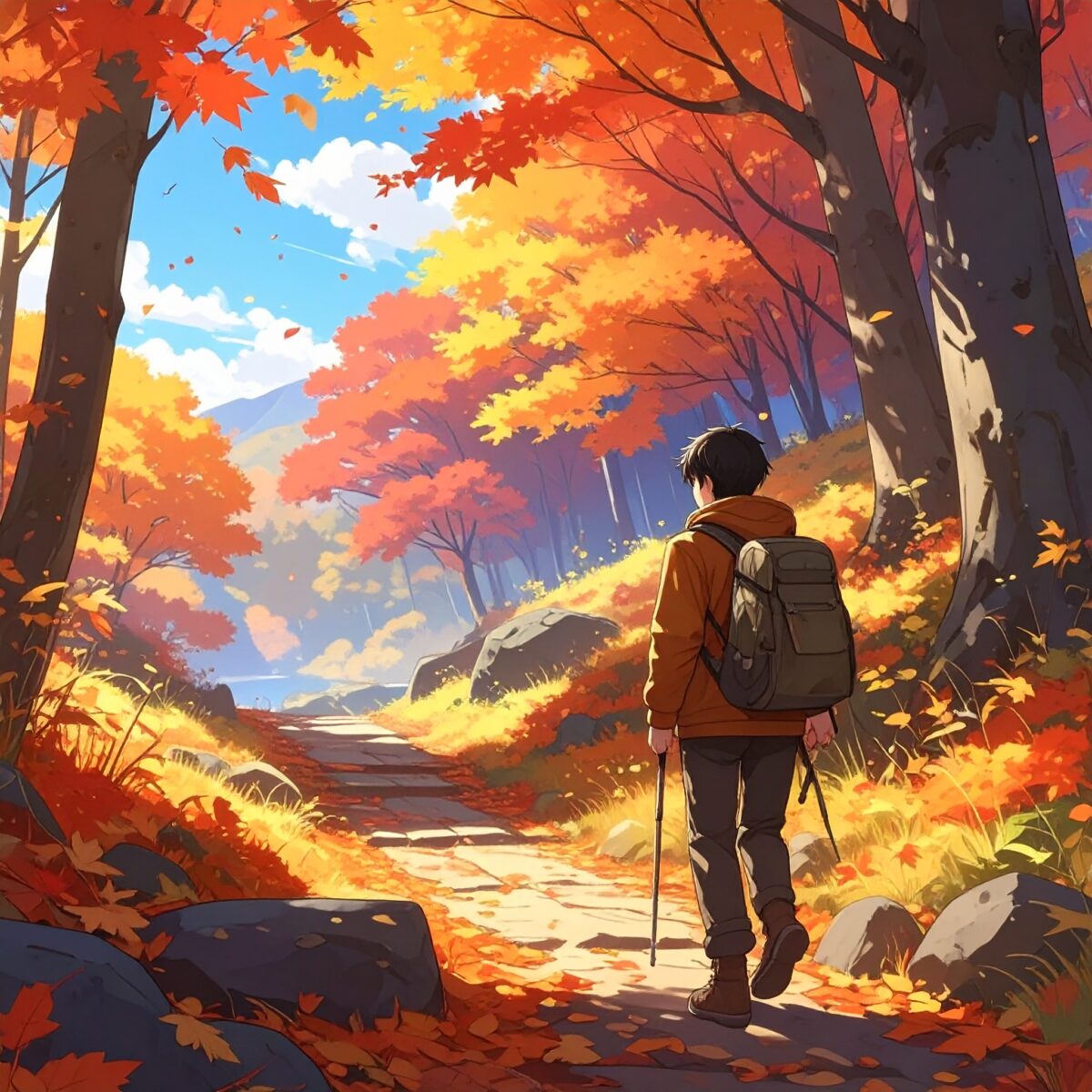As the air turns crisp and clear, trees begin to change quietly—painting the mountains and countryside in vivid gradients of red, gold, and orange. In this season, nature becomes a living canvas. “Autumn foliage hikes and leaf art” offer a way to immerse yourself in this beauty—walking through colorful landscapes, collecting leaves and nuts, and turning those moments into personal works of art.
These programs take place during peak foliage season in natural parks, forest paths, and river valleys across Japan. The experience blends hiking with creativity, beginning with a gentle walk through the autumn woods led by a local guide. Along the way, participants learn to distinguish different trees—like maple, ginkgo, and Japanese zelkova—by observing their leaves’ shapes, colors, scents, and textures.
The walking pace is relaxed, making it suitable for children and seniors alike. Benches and scenic lookouts along the trail provide places to rest, enjoy a snack, and take in the views—moments that are just as treasured as the walk itself. Beneath your feet, fallen leaves form a natural mosaic, each one with its own hue and pattern, like pieces from nature’s palette.
In the second half of the program, participants use the leaves, twigs, and acorns they’ve gathered to create their own artwork. Back at the facility, they sit down at tables to arrange the materials onto paper, do leaf rubbings, or create collages that capture their impressions of the day. There’s no set theme—the goal is to express the landscape you saw, the air you felt, and the colors that stayed with you in a way that’s entirely your own.

For children, creating something with treasures they’ve found in nature is a source of great joy. Sitting side by side at a table, parents and children quietly focus on their creations—one of the most peaceful and intimate moments of the journey. The finished artwork can be taken home and displayed, preserving the memory of the trip in a tangible and visual form.
Leaf art requires no special tools or artistic skills, making it approachable for anyone—including small children or those who aren’t confident in drawing. Simply gluing, arranging, tracing, or adding color allows each person’s unique sense of beauty to naturally emerge. Rather than comparing with others, the process encourages you to reflect on your own way of seeing nature.
Many of the guides and staff are deeply knowledgeable about local plant life and seasonal transitions. They gently explain the background behind the changing colors—what types of trees you see, why the leaves turn red or yellow, and how the forest prepares for winter. This knowledge adds depth to the creative process, turning art into an extension of observation and understanding, not just a craft.
This experience is also popular among international visitors. Many programs offer English-speaking guides and multilingual materials, allowing guests to engage with Japan’s seasonal beauty and ecological wisdom beyond words. The creative session itself transcends language, making space for shared expression across cultures and generations.
While autumn leaves are beautiful enough just to behold, picking them up, working with your hands, and turning them into a personal memory makes the experience even more profound. Through art, you build a quiet bridge between yourself and the landscape—transforming a moment of scenery into something deeply your own.




